FLORIDA KEYS


ELECTRIC COOPERATIVE
NOVEMBER 2024






FLORIDA KEYS


ELECTRIC COOPERATIVE
NOVEMBER 2024





FKEC crews responded to Clay Electric Cooperative’s request for mutual aid to restore power to its members affected by Hurricane Helene. Crew leader Rudy Vega, on the ground, and lineworker Rafael Medina, on the pole, hang a transformer on a newly set pole, replacing what was destroyed by the storm. Read more on Page 6.






































































November 2024 • Volume 14, No. 1
CEO Michael Shepard
VICE PRESIDENT OF CONTENT Leon Espinoza
EDITORIAL DIRECTOR Mike Teegarden, CCC
DEPUTY EDITORIAL DIRECTOR
Noble Sprayberry
SENIOR EDITOR Jennifer Paton, CCC
FLORIDA CURRENTS EDITORS
Chasity Anderson, CCC; Valeri Pearon
ASSISTANT EDITORS Victoria Hampton, CCC; David Herder, CCC
ASSOCIATE EDITOR
Nina Todea
PUBLICATIONS PRODUCTION
SENIOR MANAGER
Elizabeth Beatty
SENIOR PUBLICATIONS COORDINATOR
Alyssa McDougle
Members acknowledge that $4.49 a year, plus postage, is the cost to publish 12 issues a year of FLORIDA CURRENTS ISSN 23276304 (USPS 8300). Published by Pioneer Utility Resources Inc., 5625 NE Elam Young Pkwy. Ste. 100, Hillsboro, OR 97124—a not-for-profit Oregon cooperative corporation—the magazine serves the communication needs of consumerowned electric utilities in Florida. Preferred Periodicals postage paid at Hillsboro, OR 97123 and at additional mailing offices.
Postmaster: Send address changes to 5625 NE Elam Young Pkwy., Ste. 100, Hillsboro, OR 97124-6422.
HOW TO CONTACT FLORIDA CURRENTS
Subscription services:
Nonmember subscriptions $15 U.S. a year; $25 foreign a year. Prepayment required. Allow 4-8 weeks for first issue. Identify local edition desired. Have a problem receiving your magazine? Utility members should contact their utility office. Nonmembers call 503-357-2105 or email mailingdept@pioneer.coop. Back issues:
Back issues and extra copies are $3 each, prepayment required. Supply is limited. Identify edition, month and year. Call first to check availability. Contact Pioneer Utility Resources: P.O. Box 1306, North Plains, OR 97133-1306; 503-357-2105; email: mailingdept@pioneer.coop.
DISPLAY ADVERTISING INQUIRIES
American MainStreet Publications 611 S. Congress Ave. Ste. 504 Austin, TX 78704-1714; 800-626-1181 or 512-441-5200; amp.coop.
© 2024 Pioneer Utility Resources. All rights reserved. Reproduction in whole or in part without written permission is prohibited. Direct reprint requests to editor@floridacurrents.com or for more information, visit www.pioneer.coop.

Use FKEC’s SmartHub Web and Mobile App to:
X Pay your bill online to prevent mail delays and late fees.
X Increase payment security. (Check your account balance 24/7 to prevent being scammed. Prevent mail fraud by not sending a paper check.)
X Sign up for auto pay, set your secure payment method or go paperless.
X Access your account anytime from anywhere 24/7.
X Access energy use data.
(Track your power use trends daily, weekly, monthly or yearly and use energy more wisely.)

X Access FKEC’s live power outage map.
X Contact us. (Report an issue and submit a general inquiry from your computer or mobile device.) Visit www.FKEC.com or scan the QR code to get the mobile app.
Registration is fast and easy!


Member Owned Since 1940
Karl Wagner
District 4, Marathon, President
Michael H. Puto
District 4, Marathon, Vice President
Cale Smith
District 3, Islamorada, Treasurer
Gretchen Holland
District 1, Key Largo, Secretary
James J. Boilini
District 1, Key Largo
David C. Ritz
District 1, Key Largo
Craig Belcher
District 2, Tavernier
Joseph H. Roth III
District 2, Tavernier
George D. Hertel
District 3, Islamorada
CONTACT US:
305-852-2431 800-858-8845
Pay by Phone 1-855-940-4077 www.FKEC.com
Mailing Address:
P.O. Box 377, Tavernier, FL 33070
You can obtain residential rebates (up to $500 max. per calendar year) for completing qualifying, energy-efficient upgrades and improvements at your home. Learn more at www.FKEC.com
Being part of an electric cooperative has unique benefits, and this issue highlights two important ones: Capital Credits and Mutual Aid. Though distinctly different, both offer significant advantages to our members.
When you join FKEC, you’re not just a customer—you’re a member-owner, earning Member Capital Credits as a share in our success. As a not-for-profit, member-owned cooperative, we operate at cost, returning excess revenue to you. Each year, our board determines how much to return to members. In 2024, we’re returning 100% of the Member Capital Credits from 2005, totaling $3,164,773.22.
If you’ve moved out of our service area or no longer have an active account, be sure to update your address so we can send your credits when they’re retired. To date, FKEC has returned nearly 45% of members’ equity, placing us in the top 10% of the nation and number one in Florida.
Unless otherwise noted, “FKEC NEWS” writing, design & photography by: Nikki Dunn Cullen, news@fkec.com.
Under long-standing mutual aid agreements, electric co-ops respond to requests for assistance whenever another faces extensive restoration work. As a member of the National Rural Electric Cooperative Association, FKEC is one of 900+ electric cooperatives serving 42 million people in 47 states. On a local scale, we are one of 17 Florida co-ops that comprise the Florida Electric Cooperative Association. While FKEC is an independent utility, the unity and pledge of support between fellow electric co-ops through mutual aid, is a critical advantage of being a cooperative.
Over the last several years, we are


SCOTT NEWBERRY Chief Executive Officer
grateful Mother Nature has spared our service territory a direct hit by a major storm. However, we have still participated in storm restoration via mutual aid to Florida co-ops, including sending crews to areas impacted by hurricanes Ian, Idalia, and, most recently, Helene.
And it’s not over yet. As I write this CEO report in early October, seven of our crew members just returned safely from helping Clay and Suwannee Valley electric cooperatives recover from Helene. And now, we are carefully watching storm Milton build in the Gulf of Mexico, with an imminent path hitting somewhere on the west coast of Florida. As much as we wish we could control the weather, we hope our members find reassurance in knowing electric co-ops stand united, ready, and willing to restore power as quickly and safely as possible after any storm. Please read more on page 6. n
which represents the excess revenue generated in 2005.
Each year, FKEC calculates our annual margins by taking our total revenue and subtracting all operating costs. The resulting margins are then allocated to each member based on their patronage, which is the amount of electricity he or she purchased during that year in proportion to the total amount purchased by all members. Once the margins are allocated to each current member for that year, they are then called Member Capital Credits.
Why do we do this? As a not-for-profit cooperative, FKEC is owned by its members. As you pay your electric bill each month, FKEC uses that money to pay for power supply, improve electrical infrastructure, ensure continuity of service, make

Florida Keys Electric Co-op tracks your electricity usage and payments throughout the year.
payments on any loans and provide an emergency reserve. Any revenues left over after covering FKEC’s operating expenses (also known as margins) are allocated back to you as Member Capital Credits. Like other electric co-ops, FKEC retains its Member Capital Credits for a number of years to invest in improvements and maintain the electric system. This also helps to limit the amount of money the co-op borrows, which in turn helps lower the rates on your electric bill.
If you were an FKEC member in 2005, you will receive some form of Member Capital Credit on your November 2024 Electric bill. Have more questions? Please visit www.FKEC.com or call 305-852-2431. n
Like all electric co-ops, FKEC operates at cost, returning any excess revenues to our members in the form of Member Capital Credits.

At the end of the year, we review our finances to determine any excess revenue.


The excess revenue is allocated to our members as Capital Credits, based on how much electricity they paid for that year.


When financial conditions allow, FKEC’s Board of Directors elect to return the allocated Capital Credits.

September 2024 ended with a bang when Hurricane Helene plowed through Florida’s Big Bend area, a region already hard-hit by storms over the past two hurricane seasons.
Although Helene stayed far from our island chain, we still experienced high wind gusts and foul weather, causing a few power outages. Fortunately, conditions allowed our crews to respond immediately, restoring power quickly and—most importantly—safely, despite the wind and rain.
As our skies in the Keys cleared, the northwest coast of Florida took a direct hit from the Category 4 storm, unleashing heavy rain, fierce winds, and a powerful storm surge on those in its path. After assessing their areas, impacted Florida cooperatives began requesting mutual aid support.
One of the key benefits of being a cooperative utility is the mutual aid agreements that provide extensive support during major power restoration events. Whenever a significant storm
threatens Florida, state electric cooperative executives meet virtually via the Florida Electric Cooperative Association to coordinate how to assist each other.
“As we tracked Helene and participated in statewide electric co-op meetings, we prepared to send crews if requested,” said FKEC COO Tom Anthony. “While quick mobilization is critical, it also requires careful coordination to ensure crews and resources are deployed to areas ready for assistance— something we co-ops work together on.”
On September 27, a day after Helene made landfall in Florida, Clay Electric Cooperative requested line help, and FKEC answered by deploying six linemen and a supervisor to the Gainesville area for power restoration. The next day, FKEC also sent Storekeeper Phil Guinta to Suwannee Valley Electric to provide warehouse support. As FKEC learned during Hurricane Irma restorationin 2017, all hands are needed to restore power, including warehouse personnel,
to manage and distribute supplies efficiently.
FKEC’s line crew joined over 700 mutual aid and contract crews assisting Clay Electric Co-op. Our team worked approximately 16 hours a day for seven consecutive days, setting new poles and stringing power lines in hard-hit Alachua County, Florida.
“It was long, hard work, but a very rewarding experience,” said lineman Josh Nicolay who has participated in mutual aid numerous times throughout his career. “Everyone we worked with at Clay Electric, as well as their members, were very nice, accommodating, and appreciative.”
FKEC is proud to be part of a network that prioritizes mutual aid and member support, both locally and across the state. As always, we are grateful for the opportunity to serve our members and for the appreciation we receive from those we help along the way. Together, we remain committed to upholding the cooperative principles that put our members first. n

FKEC Lineman Rafael Medina pulls a power line to a newly set pole as part of the team’s efforts to help rebuild sections of the distribution system and restore power to Clay Electric Cooperative members.

It’s a small cooperative world. While assisting Suwannee Valley Electric, Store Keeper Phil
got to say hi to former FKEC employee



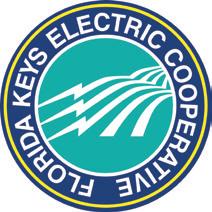





Power restoration work after Helene involved long days setting new poles, installing pole-top equipment, and stringing power line.









Please note: At the time this issue of Florida Currents went to press, we were closely monitoring Hurricane Milton, which was forecasted to impact Florida’s west coast as a significant storm. If Milton affects FKEC’s service territory or prompts additional mutual aid efforts, we will share those details in a future edition. We extend our thoughts and best wishes for a safe recovery to all impacted.





FKEC encourage our members to take advantage of the many co-op conveniences we offer. The list below is only the top of the iceberg of the programs, services and resources we provide to address member needs, interests and maintain quality customer service.
FKEC’s Meter Mounted Surge Protection provides a level of defense for your entire home’s or business’ electric system. www.fkec.com/services/surge-protection/
For safe and easy portable generator connection, FKEC’s “GenSafe” Program allows members to purchase a metermounted device that includes an outlet for a portable generator. www.fkec.com/services/gen-connect
For outdoor lighting of yards, driveways, walkways, roads and other areas, FKEC offers dark-sky compliant LEDs to members for a monthly rental charge based on the kWh used. www.fkec.com/access-your-account/outdoor-lighting
Track the location and restoration status of a power outage in our service territory via a computer or mobile device. www.fkec.com
FKEC performs informative electrical presentations and safety demonstrations for students and organizations in our community. To learn more call 305-852-2431. www.fkec.com/resources

FKEC net metering makes it easy for solar homes and businesses to draw power from the local power grid while also producing solar energy. The program also allows FKEC to incorporate more solar power into its system by buying back the surplus generated by the solar homes. www.fkec.com/green-power
To help members have financial access to solar power generation, FKEC offers a Solar Loan program. Experience a streamlined application process, along with the convenience of having your loan payment payable with your monthly electric bill. www.fkec.com/green-power/solar-loan-program
We offer qualifying members a loan of up to $25,000 to purchase and installation of a new automatic standby generator with the convenience of having your loan payable with your monthly electric bill. www.fkec.com/services/generator-loan
Our Landlord Automatic Transfer of Service Program makes managing electric bills for residential rental properties easy. When a tenant requests a disconnection of service, their electric bill seamlessly transfers to the landlord listed. www.FKEC.com/landlord-auto-transfer
Be aware of the Monroe County Special Needs Registry designed to assist county residents who need transportation or sheltering help in a declared emergency. Learn more at www.monroecountyem. com/1324/Emergency-Management or call 305-292-4591. Note, this service is offered by Monroe County Emergency Management and is independent of FKEC.
Through FKEC’s online media center, access past and present news releases, our monthly newsletter, Florida Currents, board meeting dates and times, agendas, and minutes. www.fkec.com/news-and-info
FKEC offers a Residential Rebate Program to help our members reduce energy consumption! To benefit as many members as possible, FKEC offers a wide range of qualified rebates, from investing in a new air conditioner to reflective roof coating. Rebates range from $25 to $500, with a $500 limit per member per calendar year. www.fkec.com/services/residential-rebate

The very best hunting knives possess a perfect balance of form and function. They’re carefully constructed from fine materials, but also have that little something extra to connect the owner with nature. If you’re on the hunt for a knife that combines impeccable craftsmanship with a sense of wonder, the $79 Huntsman Blade is the trophy you’re looking for.
The blade is full tang, meaning it doesn’t stop at the handle but extends to the length of the grip for the ultimate in strength. The blade is made from 420 surgical steel, famed for its sharpness and its resistance to corrosion.
The handle is made from genuine natural bone, and features decorative wood spacers and a hand-carved motif of two overlapping feathers— a reminder for you to respect and connect with the natural world.
This fusion of substance and style can garner a high price tag out in the marketplace. In fact, we found full tang, stainless steel blades with bone handles in excess of $2,000. Well, that won’t cut it around here. We have mastered the hunt for the best deal, and in turn pass the spoils on to our customers.
But we don’t stop there. While supplies last, we’ll include a pair of $99 8x21 power compact binoculars and a genuine leather sheath FREE when you purchase the Huntsman Blade.
Your satisfaction is 100% guaranteed. Feel the knife in your hands, wear it on your hip, inspect the impeccable craftsmanship. If you don’t feel like we cut you a fair deal, send it back within 30 days for a complete refund of the item price.
Limited Reserves. A deal like this won’t last long. We have only 1120 Huntsman Blades for this ad only. Don’t let this beauty slip through your fingers. Call today!
Blade $249* Offer Code Price Only $79 + S&P Save $170


Call today and you’ll also receive this genuine leather sheath! 14091 Southcross Drive W., Dept. HBK247-01 Burnsville, Minnesota 55337 www.stauer.com


*Discount is only for customers who use the offer code versus the listed original Stauer.com price. California residents please call 1-800-333-2045 regarding Proposition 65 regulations before purchasing this product.
Afford the Extraordinary ®

of this
As the holiday season heats up across Florida, people plan extra travel, online shopping, share more images on their favorite social media platforms and more. Even the online world is busier this time of year.
Unfortunately, that digital hustle and bustle does not lack risk, but a few prudent precautions can keep you safe no matter where you go online.
Passwords are everywhere. Almost every daily online activity requires a secure login, and the added protection is welcome.
While managing all those passwords effectively and conveniently can present challenges, there are simple strategies and tools to help. The U.S. Cybersecurity and Infrastructure Security Agency offers advice to boost password security, as well as suggestions for the critical tools needed to keep it all straight.
A good password follows all three of these tips:
1. Make them long—at least 16 characters. Longer is stronger!
2. Make them random.
Option 1: Use a random string of mixed-case letters, numbers and symbols. For example: cXmnZK65rf*&DaaD or Yuc8$RikA34%ZoPPao98t.
Option 2: Create a memorable phrase of five to seven unrelated words. Then, get creative with spelling and the addition of a number or symbol.
Strong: HorsePurpleHatRunBaconShoes
Stronger: HorsPerpleHatRunBayconShoos
Strongest: HorsPerpleHat#1 RunBayconShoos
3. Use a different strong password for each account.
For example:
Bank: k8dfh8c@Pfv0gB2
Email account: LmvF%swVR56s2mW
Social media account: e246gs%mFs#3tv6
Keeping up with these longer, complex passwords brings its own challenges, but password managers can help. These tools create a secure repository for your passwords. They range from resources already in your web browser to paid commercial software.
The basics. A password manager is a software tool that organizes all your passwords. Then, a single master code
unlocks this vault, encouraging use of long, complex passwords.
Free built-in managers. Web browsers, including Safari, Chrome and Edge, have built-in password managers. These can be accessed across devices, from computers to phones. These password managers may suffice for those with only basic needs, but they are limited. For instance, passwords in Apple’s Safari aren’t accessible on an Android phone running Google’s Chrome. Paid tools. For more robust options, there is software like LastPass, 1Password and Bitwarden. These work across multiple types of devices and have additional features, such as the ability to generate passwords and integration into your favorite web browser.
Two keys for success. Make your master password long, reliable and unique. Also, regularly review your stored passwords to remove passwords for accounts you no longer use.

Quick Response Codes—otherwise known as QR Codes—pop up often. TV ads, restaurant menus and more rely on these little squares of blocky lines to quickly link a smartphone user to handy information, a download or a way to send money digitally.
The FBI, however, has warned that cybercriminals may tamper with the codes. The FBI offers a few tips so you can take advantage of QR codes while staying safe and secure:
• After scanning a QR code, check the URL to make sure it leads to the site you want. A malicious domain name may be similar to the intended web address but with typos or a misplaced letter.
• Be cautious when entering login, personal or financial information.
• If scanning a physical QR code, ensure the code shows no signs of tampering, such as a sticker placed over the original.
• Do not download an app from a QR code.
• If you receive an email asking you to complete a payment through a QR code, call the requesting company to verify. Look up the company’s number on a trusted site. Don't use a number from the email.
• Do not download a QR code scanner app. Your phone’s built-in camera is a safer choice.
• Avoid making payments through a site reached from a QR code. Instead, manually enter a known and trusted URL to complete the payment.
Whether you’re taking your laptop to a nearby coffee shop or setting up a workstation at home, keep these guidelines in mind to make sure you’re always secure.


















Stay updated. When you see an alert about a new software update, don’t wait to install it. These updates often close security loopholes. It’s also important to have an antivirus program installed that can protect your devices from the latest viruses, spyware and phishing scams.
Don’t take the bait. Speaking of phishing scams, it’s important to be extra alert when working remotely. Bogus emails can hit an office just as easily as your home computer, but it’s easier to spot a fake when the co-worker supposedly asking for sensitive information is in the same room as you. Always be sure to double-check any suspicious requests.
Protect work devices. Working from home often means exposing your work devices to kids or other family members who may not be as careful about security measures as you are. Take steps to make sure others aren’t using your work devices or accidentally seeing sensitive information. Also, try to avoid working on personal devices that may not be as well-secured.
Stay in the cloud. Not only do cloud applications receive regular security updates, saving your work to cloud storage also creates a shared backup. That way, even if local files on your device are lost, corrupted or stolen, you still have access to everything.
Make video conferences private. The popularity of video conferencing apps has skyrocketed in recent years as more teams collaborate from afar. However, a digital meeting space comes with security considerations. To prevent unwanted visitors, consider requiring a password for calls or keeping any new arrivals in a waiting room.

By Pamela A. Keene
Mother Nature’s balance can go awry, sometimes as the result of natural disasters, such as hurricanes, but also through human actions and decisions. Such is the case with Florida’s Everglades, which has provided a natural water flow from Central Florida to Florida Bay for millions of years.

“Less than 200 years ago, the Everglades covered almost one-third of Florida,” says Allie Hartmann, communications director with Friends of the Everglades. “Originally stretching more than 2 million acres, it provided a balance for flora and fauna to thrive. But over the past century, the largest wetland ecosystem in the United States has been changing and shrinking, affecting not only wildlife but also the quality of the water many Floridians depend on.”
For the past quarter-century, federal, regional and district water management agencies worked to reverse the effects of draining the grassy wetlands to make way for agricultural expansion and urban development. In 2000, the Comprehensive Everglades Restoration Plan, or CERP, authorized a federal-state partnership to restore, protect and preserve the South Florida ecosystem.

Led by U.S. Army Corps of Engineers in partnership with South Florida Water Management District, the initiative is a framework and guide for restoring, protecting and preserving the water resources of Central and South Florida, including the Everglades.
“CERP is a massive initiative with many moving parts and multiple agencies on the federal and state level,” Allie says.
“CERP covers 16 counties and includes more than 60 individual project elements. The multilayered CERP is significant and complex.”
More than a half dozen CERP-authorized projects are under construction, including the nearly completed restoration of Picayune Strand State Forest.
“The beauty of this project is that it’s all about restoring the ecosystem,” says Kathy Worley, director of Environmental Science for the Conservancy of Southwest Florida. “From the 1950s until the early 1990s, this part of the Everglades became seriously degraded when canals were dug to alter the water flow and/or drain the land, and lime rock roads were built for access.


“The canals changed the water-flow patterns, its quality and
















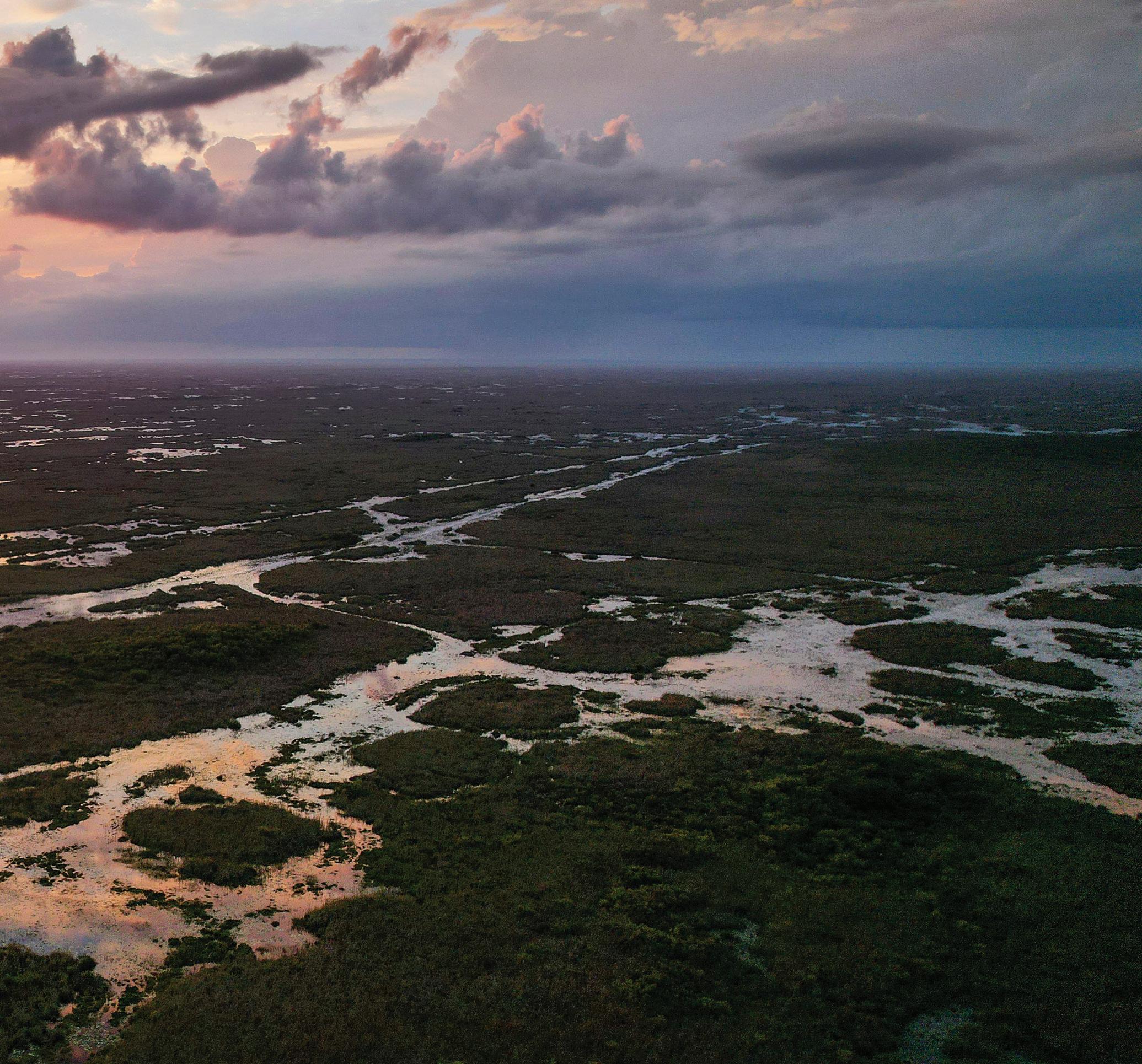
the ecosystem, resulting in the inability of the landscape to handle a 10-year flood. Plus, a 2- to 4-foot drop in the historic water table increased drought and wildfires and allowed exotic plants to proliferate,” Kathy says. “It negatively affected several species of wildlife, including wading birds such wood storks, herons and egrets.”
Florida’s process to restore Picayune Strand Forest began in 1991, when the state started buying land.
“The conservancy wanted to help with this key first step,” Kathy says. “We partnered with the state to expedite the processing of title documentation that would accelerate offers to property owners.”
After land was acquired, work began to fill in the canals and remove the roads. Pump stations were installed for flood protection, and spreader basins were built to slow the water flow and spread it over the landscape to replicate the natural sheet flow.
Steps were also taken to protect the agricultural and urban lands to the south and west of Picayune.
“Since 2006, the majority of the roads have been removed, the majority of the canals plugged, and conveyance features to move water under U.S. 41 and C.R. 92 are nearly complete,” Kathy says. “There’s an enormous cost for this restoration, but in the end, it is worth it. This project is returning the land to its
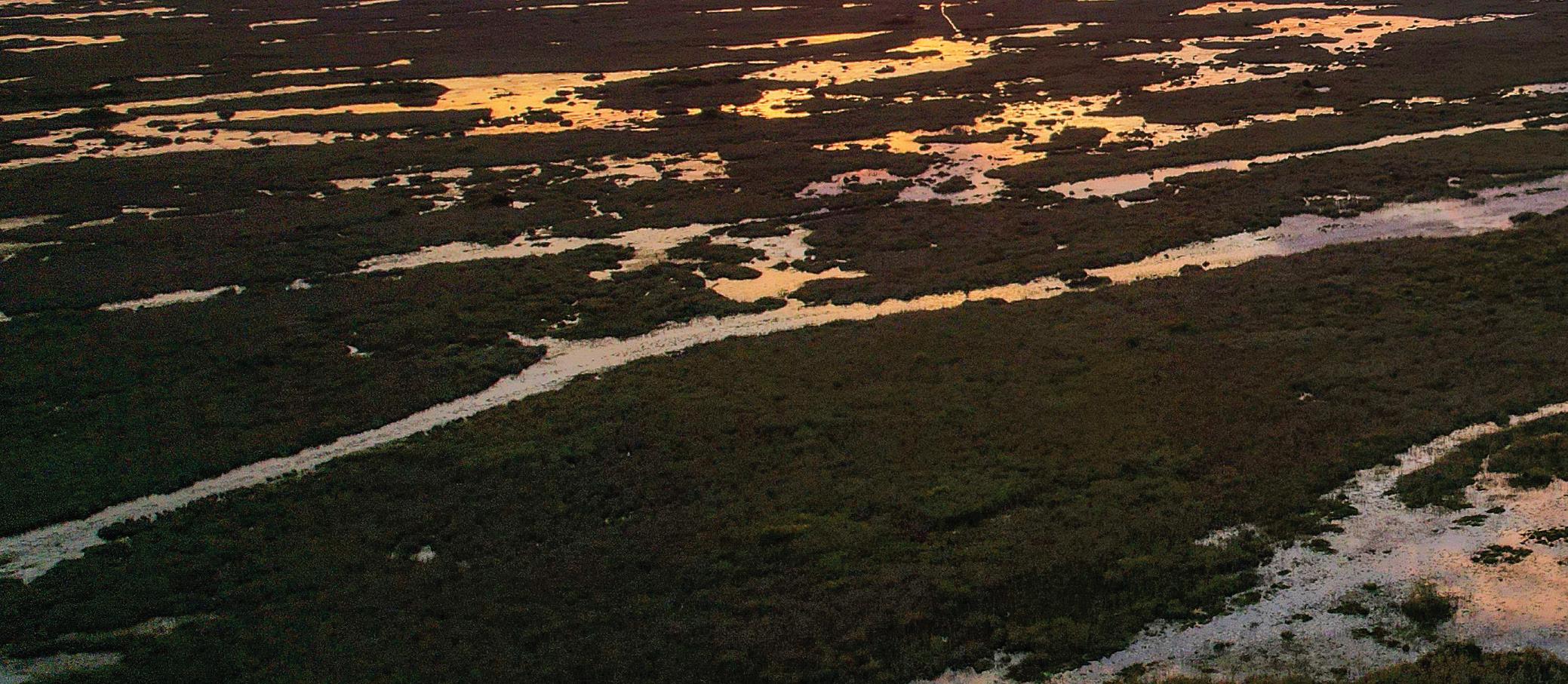
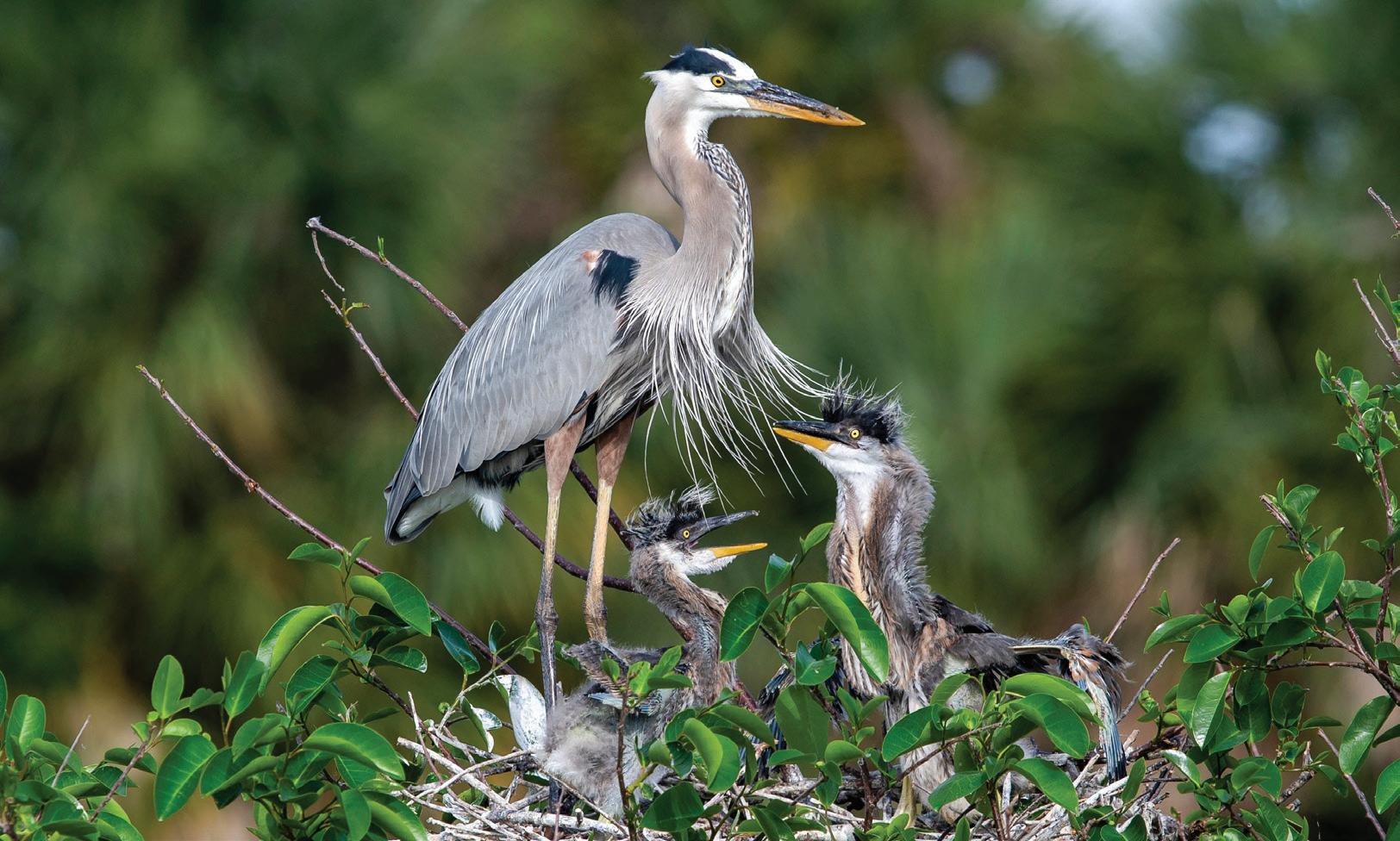
natural state as much as possible. While this project will benefit wildlife, it also helps to protect our water table and potentially lessen the advance of saltwater intrusion. It’s all about getting the hydrology right.
“Success will be determined by changes in the distribution and movement of the water, the return of wetland vegetation and the arrival of wildlife suited for the area,” she adds.
The Native Americans called it “Pa-hay-Okee,” meaning “grassy waters.” For centuries, they paddled their dugout canoes through the natural pathways between the grasses to hunt and fish. Early explorers named it “Ever-Glades” because their first impression was of open waters almost as far as the eye could see.
For millennia, it kept its footprint, with fresh water flowing

from the Kissimmee River through Lake Okeechobee and onward into Florida Bay. But by the early part of the 20th century, the footprint of the Everglades was changing as people dug canals to drain the grasslands to create more farmland. The water flow was compromised.
The changes didn’t go unnoticed by people like journalist and author Marjory Stoneman Douglas, a conservationist and women’s suffrage advocate, who wrote about the beauty and diversity of the Everglades. She coined the name “River of Grass” to describe the slow movement of water through the sawgrass, and for much of her life, she worked to conserve the 3 million acres from the Kissimmee River to Lake Okeechobee and into Florida Bay.
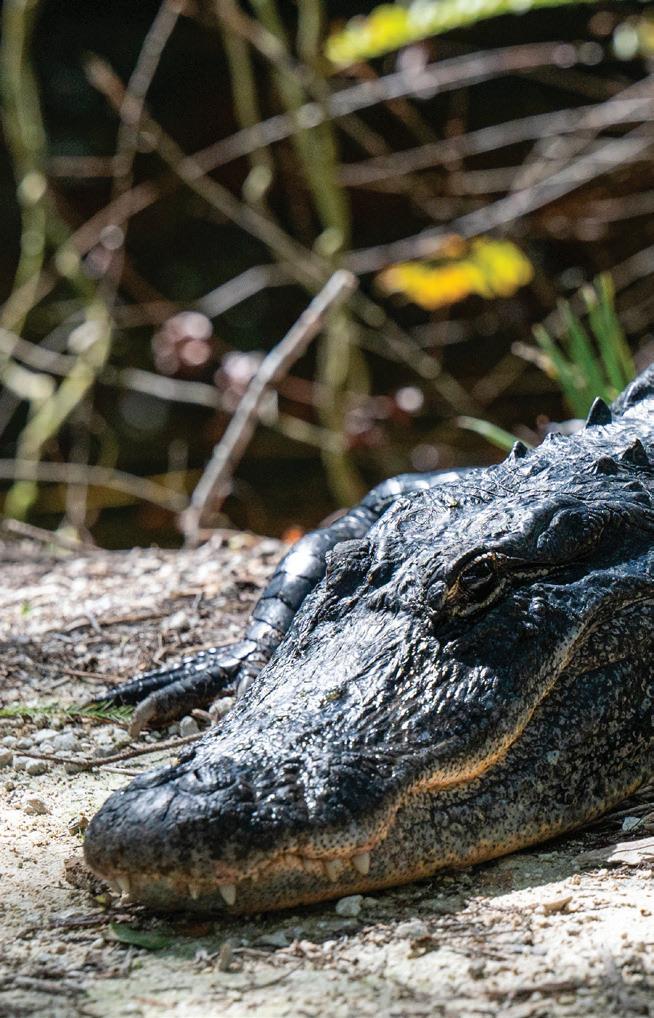
“Looking back to Marjory’s time, the Everglades had already begun to shrink, affecting the balance of the ecosystem,” Allie says. “As a forceful and outspoken advocate, Marjory brought the Everglades to the attention of other influential conservationists, and she is credited with changing the public’s perception from swampy wasteland to national treasure and helping to spearhead the creation of Everglades National Park, designated by Congress in 1934. However, it took until 1947 to acquire the land and the necessary funding.”
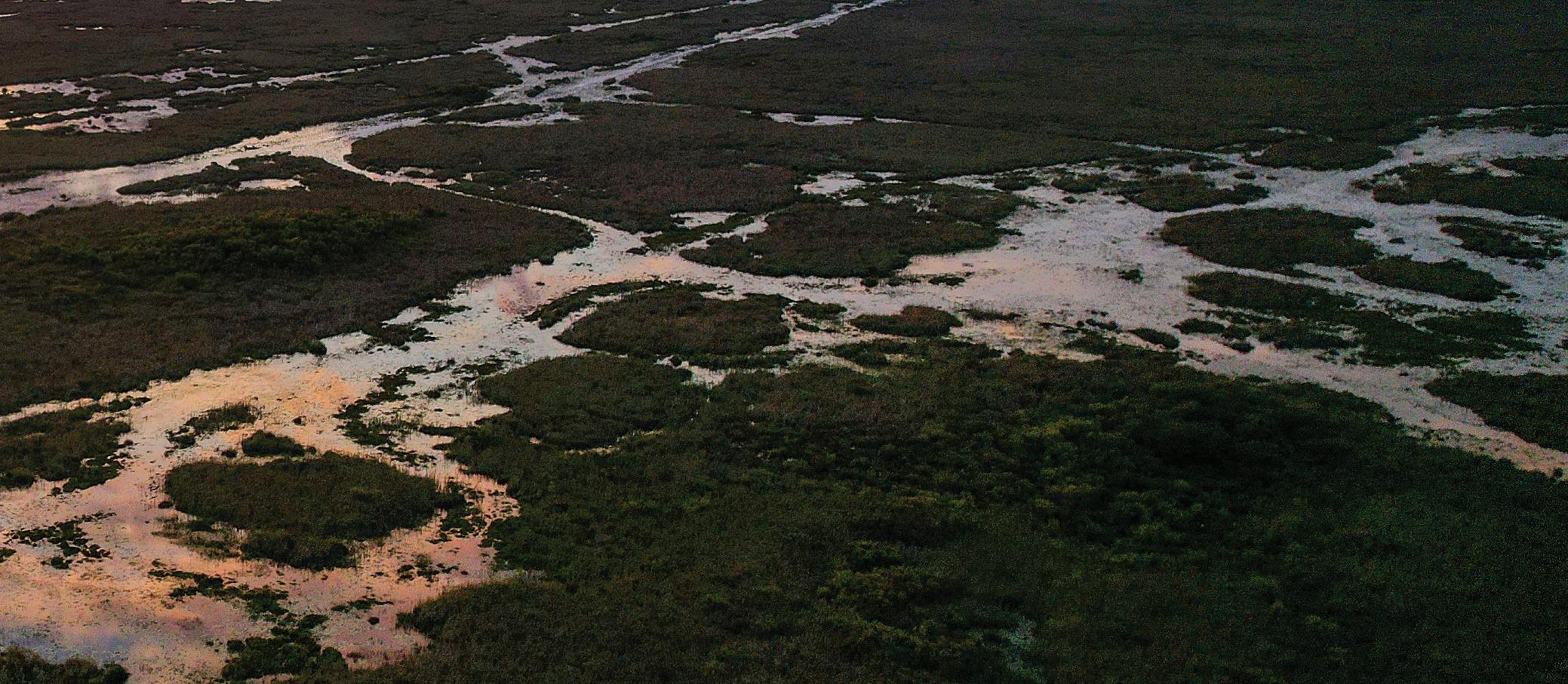

A former reporter with The Miami Herald, Marjory’s book, “The Everglades: River of Grass,” was published in 1947. For her conservation and advocacy work, she became known as the “Mother of the Everglades” and founded the Friends of the Everglades in 1969.
Marjory lived to be 108 years old, and for much of her later life, she worked for Everglades restoration. She received the Presidential Medal of Freedom by President Bill Clinton in 1993 at age 103.
“Marjory would be invigorated that work continues to restore her beloved Everglades,” Allie says. “The legacy she inspired at Friends of the Everglades goes back 55 years, and we remain dedicated to this increasingly urgent cause.” n
X Authorized as a national park by Congress on May 10, 1934, it took 13 years to acquire the land. Then-President Harry S. Truman dedicated the 1.5-million-acre area on Dec. 6, 1947.
X The Everglades is actually a 60-mile wide, 100-mile-long river that starts at Lake Okeechobee and flows south and southwest into the Gulf of Mexico.
X The park is one of the largest wetland ecosystems in the world.
X The largest subtropical wilderness in North America, the Everglades contains 300 species of fish, 17 species of amphibians, 360 species of birds, 40 species of mammals and 50 types of reptiles.
X Thirteen endangered species and 10 threatened species live in the Everglades.
X The land supports the largest intact stand of protected mangrove forests in the Northern Hemisphere.
X The Everglades is the only place in the world where American alligators and American crocodiles live together in the wild.
X Nonnative Burmese pythons live throughout the Everglades, killing native songbirds and alligators, as well as deer and other mammals.
X The river provides drinking water for more than 8 million people.
X The wetlands support 43 species of mosquitoes, including 13 species that bite humans.
X The Everglades has been expanded several times since 1981. Hell’s Bay Canoe Trail, 8 miles, and the Wilderness Waterway, 99 miles, received National Trails Designation on March 20, 1981. The Everglades Expansion Act added East Everglades, 109,500 acres, to the park on Dec. 13, 1989.
X The state of Florida donated Chekika State Park on Oct. 1, 1991.





Leftover Turkey and Dumpling Soup
Olive oil, as needed
1 large onion, sliced
2 medium carrots, peeled and diced
2 celery stalks, diced
1/2 cup frozen peas
2 sprigs fresh sage
2 sprigs fresh thyme
2 bay leaves



21/2 quarts turkey or chicken stock
2 cups all-purpose flour
2 teaspoons baking powder
1 tablespoon sugar
1 teaspoon salt
13/4 cups heavy cream
1 pound leftover turkey, shredded
Salt and freshly cracked black pepper, to taste
Heat a large, heavy-bottom pot over medium heat. Add enough oil to just coat the bottom. When the oil is hot, add the onion slices. Let them caramelize for about 8 minutes or until golden brown, stirring often. Add the carrots and celery. Season with salt and pepper. Saute for about 8 minutes.
Add the sage, thyme, bay leaves and stock. Stir well and bring the liquid to a simmer.
Simmer for about 25 minutes, stirring often. Season the soup with salt and black pepper, to taste.
Meanwhile, combine the flour, baking powder, sugar and salt in a mixing bowl. Stir to combine. Stir in the heavy cream until just incorporated. Don’t overmix. The dough should be somewhat lumpy.

Remove the herbs from the soup, and stir in the turkey. Use two spoons to drop the dumplings into the soup in an even layer. Cover the pot, and simmer for 8 minutes. Remove the lid, add the peas, and simmer for 3 minutes.
Serve the soup in large bowls topped with black pepper and any additional herbs.
¼ cup plus 2 tablespoons unsalted butter, divided
3 cloves garlic, grated and divided 1/2 cup panko breadcrumbs
2 teaspoons kosher salt, divided, plus more for pasta water
3/4 teaspoon ground black pepper, divided
1/3 cup grated Parmesan cheese
1 pound dry cavatappi pasta
6 sage leaves
1/2 medium yellow onion, grated
2 tablespoons flour
1 teaspoon ground mustard
¼ teaspoon ground nutmeg
¼ teaspoon cayenne pepper
2 cups whole milk
15-ounce can pumpkin puree
8 ounces fontina cheese, shredded
8 ounces smoked gouda cheese, shredded
In a small nonstick skillet, melt 2 tablespoons of butter over medium heat. Add 1 grated garlic clove. Cook until fragrant, about 30 seconds. Stir in the breadcrumbs, 1/2 teaspoon salt and ¼ teaspoon pepper. Toast, stirring frequently, until the breadcrumbs are golden brown, about 2 minutes. Remove the mixture to a small bowl. Cool for 5 minutes. Stir in the Parmesan. Bring water to a boil in a large pot. Add the pasta, and salt to taste. Cook, stirring the pasta, until just under al dente, 5 to 6 minutes. Drain the pasta, reserving 1/2 cup of the pasta water.
In the same pot over medium heat, melt the remaining ¼ cup of butter. Stir in the sage leaves. Cook, stirring frequently, until the sage is lightly fried and the butter is deeply golden and smells toasty. Move the sage leaves to a paper towel-lined plate, and add the onion to the butter. Cook until the onion is soft and translucent, 3 to 4 minutes. Add the remaining two grated garlic cloves. Cook until fragrant, about 30 seconds.
Whisk in the flour, mustard, nutmeg, cayenne, the remaining 11/2 teaspoons of salt and the remaining 1/2 teaspoon pepper. Cook until the raw flour smell disappears, 3 to 4 minutes. Gradually whisk in the milk until smooth. Whisk in the pumpkin puree. Cook until thick, 5 minutes.
Remove the pot from heat. Gradually add the shredded cheeses, whisking until melted before adding more. Taste for salt.
Fold in the drained noodles, adding pasta water 1 tablespoon at a time until the sauce coats the noodles.
Serve the mac and cheese hot, sprinkled with the toasted panko bread crumbs and crumbled sage.
1 cup shredded sharp cheddar cheese
1/2 cup grated Parmesan cheese
17.3-ounce package puff pastry sheets, thawed
1 large egg, lightly beaten
1/3 cup apple butter
2 teaspoons chopped fresh thyme
Heat oven to 400 F. Line two baking sheets with parchment paper. In a medium bowl, combine the cheeses. Sprinkle a clean work surface with ¼ cup of the cheese blend. Place one puff pastry sheet over the cheese, and sprinkle with another ¼ cup of cheese blend. Use a rolling pin to press the cheese into the pastry. Roll the sheet into a 10-by-14-inch rectangle. Repeat the rolling-out process with a second sheet of puff pastry and 1/2 cup of the cheese blend.
Brush the surface of one pastry sheet with egg wash. Place the other sheet on one of the prepared baking sheets. Brush the surface with the apple butter, maintaining a 1-inch border. Sprinkle with the remaining 1/2 cup of the cheese blend and thyme. Top with the second sheet, egg wash-side down, pressing the layers gently together. Refrigerate the assembled sheet for 30 minutes.
Transfer the chilled sheet to a cutting board. Using a sharp knife, cut the pastry into ¾-inch-wide strips. Transfer the strips to the baking sheets, spacing them at least 1 inch apart. Pinch the ends to close, and twist each end in the opposite direction to create a spiral. If they start to untwist, gently press the ends into the parchment.
Refrigerate the twists for 30 minutes, then brush with more egg wash. Bake until golden brown and crisp, 20 to 25 minutes.
Cool the twists on a wire rack. Serve warm or at room temperature.
2 to 21/2 pounds butternut squash
¼ cup whole milk
1 teaspoon vanilla extract
1 cup light brown sugar, packed
1 cup pecan halves
2 tablespoons unsalted butter, melted
¼ teaspoon salt
2/3 cup unsalted butter, melted
¼ teaspoon ground cinnamon
2 extra large eggs, lightly beaten
2 tablespoons light brown sugar, packed
1/8 teaspoon ground cinnamon
Heat oven to 350 F. Line a baking sheet with parchment paper or aluminum foil. Set aside. Cut the squash in half, lengthwise. Scoop out the seeds and discard. Place the squash cut-side down on the baking sheet. Bake for about 45 minutes or until the squash is tender when pierced with a fork. Allow the squash to cool enough to handle.
Spray a casserole dish with vegetable cooking spray. Set aside. While still warm, scoop out the butternut flesh and transfer to a large mixing bowl. Mash the squash with a potato masher until no chunks remain. Add the milk, vanilla, sugar, butter and cinnamon. Stir until combined. Add the eggs. Fold together until blended.
Pour the mixture into the prepared baking pan. Bake until almost set, about 30 minutes. While the casserole is baking, prepare the topping.
In a small bowl, combine the pecans, melted butter, brown sugar and cinnamon. Stir until coated. Remove the baking dish from the oven, and sprinkle the pecan mixture over the squash. Continue baking until set, about 15 minutes.
By Dave LaBelle
Thanksgiving comes in different shapes and is expressed in different ways.
Herb Recker never felt he deserved to take advantage of the Honor Flights that carry veterans to Washington, D.C.
Herb died in January at the age of 71. His Iowa friend, Tom Klaren, who served with him in the Iowa National Guard, carried Herb’s encased flag in May on an Honor Flight.
When veterans gathered at the World War I Memorial in Washington, D.C., they saluted the folded flag Tom brought, which had been given to Herb’s widow, Mary, at his funeral.
“I feel so passionate at what we owe those people, so much of what they gave up,” Tom says. “What their wives gave up, what their mothers and fathers gave up. Sometimes the ultimate sacrifice.
“I am a veteran myself, but not to the point these guys are, who served overseas. I just feel I am a step down from these

Renowned author, photographer and lecturer Dave LaBelle has captured special moments for more than half a century. For more of his writings, visit davidlabelle.com and bridgesandangels.wordpress.com.
As storytellers, we are always looking for fleeting moments that best express the pulse of a story. While I occasionally talk about photo fundamentals, my greatest interest and love is about the psychology of photography.
Perhaps you know a veteran who would agree and even enjoy the attention sitting still for a portrait would bring. Remember, when you make someone’s picture or listen to their story, you are honoring them.
Stay focused and alert. So many times, it is often those ever-fleeting gestures that reveal the most.
guys, that’s how I feel. Actually, Herb felt like I did. Since we were in the National Guard, we felt like we didn’t deserve to go like the guys who actually were in combat.”
Though Tom has made three Honor Flight trips as a guardian for four different veterans, he never made the trip as an “honored” veteran.
Herb and Tom were best friends from grade school, high school and in the National Guard. It was Tom’s honor to carry Herb’s flag to Washington, D.C.
“He was in my wedding, and I was in his wedding,” he says.

NIKON D810, 180mm lens ISO 100, f/5 at 1/200
After interviewing Tom, I made several pictures with his best friend’s flag in two different places in his home before asking him to carry Herb’s flag outside on his front lawn. Nothing I shot expressed the emotion this patriotic man felt. Then, after I was finished and sitting on the lawn, Tom grew openly emotional because it had been less than a week after returning from his trip to Washington, D.C. Emotions for Tom were still raw. Looking up, I saw him
relax and drop his guard. A small window opened, and I quickly raised my camera and was able to make two frames before the fleeting moment passed.
Once again, I was reminded of the importance of anticipating the unexpected. Sometimes the best unguarded storytelling moments happen when the formal shoot is over. Deep and buried emotions often surface ever-so-briefly once the camera is off.


Centuries ago, Persians, Tibetans and Mayans considered turquoise a gemstone of the heavens, believing the striking blue stones were sacred pieces of sky. Today, the rarest and most valuable turquoise is found in the American Southwest–– but the future of the blue beauty is unclear.
On a recent trip to Tucson, we spoke with fourth generation turquoise traders who explained that less than five percent of turquoise mined worldwide can be set into jewelry and only about twenty mines in the Southwest supply gem-quality turquoise. Once a thriving industry, many Southwest mines have run dry and are now closed.
We found a limited supply of turquoise from Arizona and purchased it for our Sedona Turquoise Collection . Inspired by the work of those ancient craftsmen and designed to showcase the exceptional blue stone, each stabilized vibrant cabochon features a unique, one-of-a-kind matrix surrounded in Bali metalwork. You could drop over $1,200 on a turquoise pendant, or you could secure 26 carats of genuine Arizona turquoise for just $99.
Your satisfaction is 100% guaranteed. If you aren’t completely happy with your purchase, send it back within 30 days for a complete refund of the item price.
The supply of Arizona turquoise is limited, don’t miss your chance to own the Southwest’s brilliant blue treasure. Call today!
Jewelry Specifications:
• Arizona turquoise • Silver-finished settings
Sedona Turquoise Collection
A. Pendant (26 cts) $299 * $99 +s&p Save $200
B. 18" Bali Naga woven sterling silver chain $149 +s&p
C. 1 1/2" Earrings (10 ctw) $299 * $99 +s&p Save $200
Set
**Complete set includes pendant, chain and earrings.


Daniel Felsher waits for ducks to fly over during a hunt at Lake George near DeLand. The lake on the St. Johns River attracts many diving ducks, especially ring-necked ducks. PHOTO BY JOHN N. FELSHER

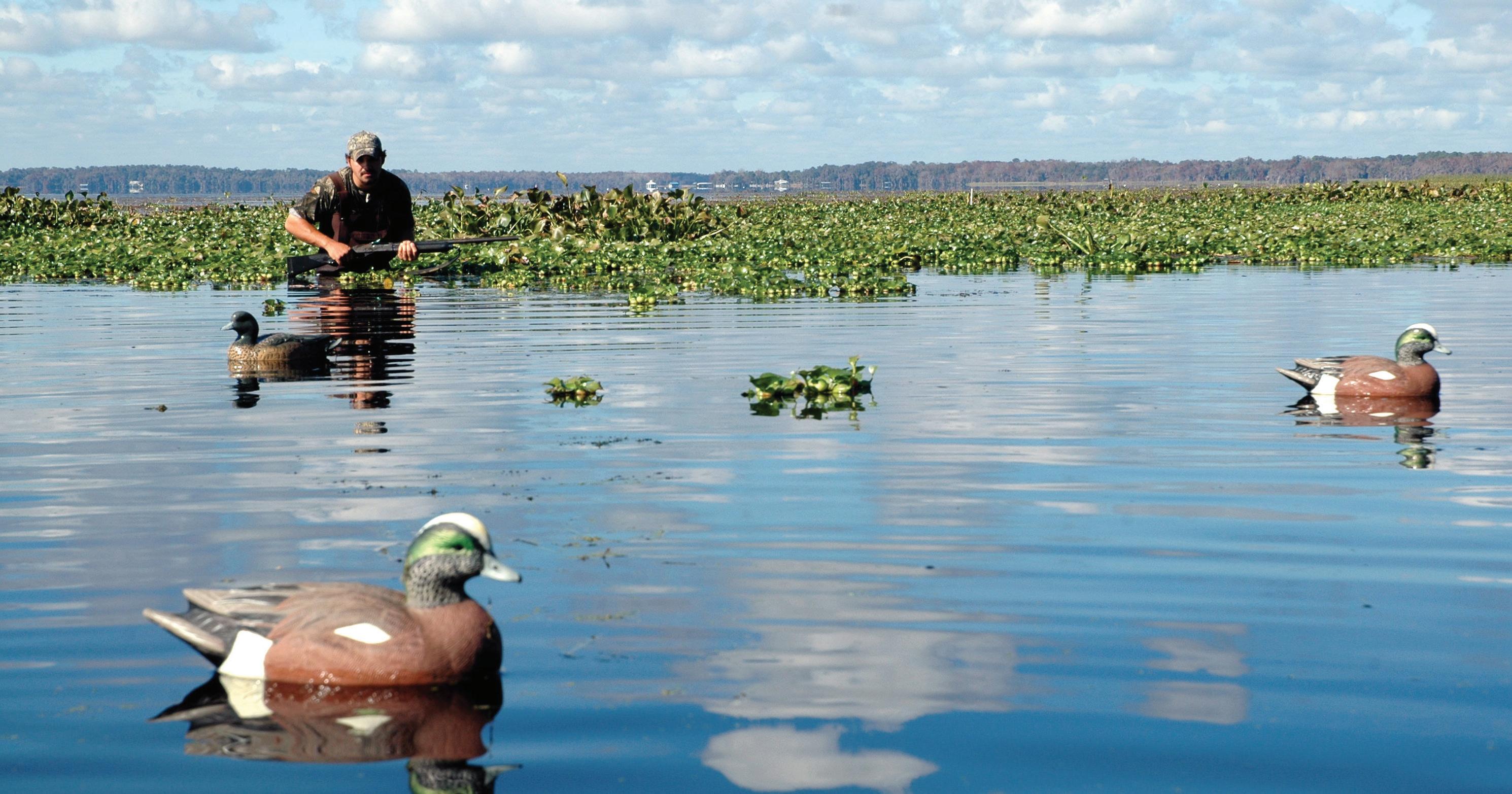

At the end of the Atlantic Flyway and covered in lakes, estuaries, marshes, swamps and other wetlands, the Sunshine State offers many places for hunters to enjoy duck hunting.
“The 2024 spring breeding habitat conditions generally declined relative to 2023, but most areas of eastern Canada and the Great Lakes continued to have good to excellent habitat,” says Andrew Fanning, Florida Fish and Wildlife Conservation Commission waterfowl and small game management program coordinator.
“Expect an average season, much like last year, with excellent opportunities for resident species.”
Blue-winged teal, ring-necked ducks, resident wood ducks and mottled ducks comprise about 75% of the Florida statewide duck harvest each year, Andrew says. Wood ducks do not migrate and prefer wetland areas with some timber.
According to the 2024 U.S. Fish and Wildlife Service waterfowl survey, blue-winged teal numbers dipped 12% from 2023, down to 4.6 million from 5.25 million. Blue-wings also stand at 10% below the long-term average. Ring-necked duck populations remain stable.
“Wintering duck abundance should increase as the season progresses with peak numbers in late December to mid-January,” Andrew says. “As usual, cold weather fronts will play a significant role in winter duck abundance in Florida.”
Some of the best waterfowl hunting in Florida occurs along the St. Johns River and its associated lakes, such as Lake George, a hotspot for ring-necked ducks. The upper basin spreads across an immense wild labyrinth of natural lakes, swamps, marshes and backwaters. Mottled ducks breed in Florida and remain in the state all year long.
The marshy upper St. Johns River system and coastal wetlands hold the most mottled ducks.
The Upper St. Johns River Marsh Wildlife Management Area
traditionally offers some of the best public waterfowl habitat in the state. It sprawls over 120,386 acres of the river basin near the Atlantic coast southeast of Orlando.
Many people hunt small pockets off lakes Winder, Poinsett or Washington. The Puzzle Lake and Moccasin Island areas usually hold some ducks.
One of the premier public waterfowling areas in Florida, the T. M. Goodwin Waterfowl Management Area south of Melbourne holds good ducks. Sportsmen might also hunt Merritt Island National Wildlife Refuge about 60 miles east of Orlando on the Atlantic Ocean near Titusville.
“Merritt Island NWR offers some excellent hunting opportunities on its numerous impoundments,” Andrew says.
People can also hunt the 100,000-acre Kissimmee Chain of Lakes south of Orlando. Farther south, Lake Okeechobee offers good duck hunting. Some people also hunt the Tampa Bay area.
“In northern Florida, people can hunt the Apalachicola Bay area and the Tallahassee lakes or the Orange Creek Basin lakes near Gainesville and the Guana River WMA near Jacksonville,” Andrew reports. “We also partner with water management districts and administer duck hunts at Emeralda Marsh Conservation Area, Ocklawaha Prairie Public Small Game Hunting Area and the Stormwater Treatment Areas in south Florida.”
Waterfowl season opens Nov. 23 and runs through Dec. 1. The late split lasts from Dec. 7 through Jan. 26, 2025.

John N. Felsher is a freelance writer, broadcaster, photographer and editor. An avid sportsman, he’s written more than 3,500 articles for more than 170 different magazines on a wide variety of outdoor topics. He also hosts an outdoor tips show for WAVH-FM Talk 106.5 in Mobile, Alabama. Contact him at j.felsher@hotmail.com or through Facebook.
















All ages can find something new and exciting around every corner of the state. Filled with rich history, abundant natural beauty and diverse events all year, Florida has something fun for everyone.
Nov. 2
Joy on the Rock Festival
Several churches in the Keys gather time and talents to offer this community experience of faith and family from 11 a.m. to 5 p.m. at Marathon Community Park. Worship bands and a collective band with performers join together for this free, all-day music festival and fellowship event. Activities include bounce houses, children’s activity area, prayer tent, crafts and artists, vendor booths and axe throwing. Admission is free. nlkeys.church/joy-on-the-rock-festival; 305-743-7165
Nov. 2
Sixth Annual Car Show/Cookout

Nov. 9
Falling for Roses Rose Show
This show is open to the public from 1-4 p.m. at St. Luke’s Church with a variety of rose bushes and other things for sale. K and M Roses begins selling roses at 11 a.m. Doors open to exhibitors at 6 a.m., and entries should be completed by 9:30 a.m. when judging starts.
As a fundraiser for St. Jude Children’s Research Hospital, Knights of Columbus Council 13341 hosts its annual car show from 10 a.m. to 2 p.m. at Our Lady of the Angels Catholic Church. In 2023, the organization raised and donated $15,000 to St. Jude, and it hopes to eclipse that mark this year. Registration to show a car is $20, and all cars are welcome. Admission to the car show is free. lakewoodranch.com/event/classic-car-show-2-2; 800-307-2624

Nov. 3
Dia de Los Muertos
Join Community Arts and Culture for a celebration that reunites the living and dead. This event is an afternoon of traditional and celebratory performance art, music and a sugar skull workshop for the whole family. Come dressed to impress in calavera style. Admission is free for all ages. The sugar skull workshop with face painting is $15 at Limelight Gallery and Studio.
www.communityarts andculture.org
www.pensacolarosesociety.org; 850-485-4348
Nov. 9-10
25th Annual Gulf Coast Seashell Show

This annual show displays seashells from around the world. There are vendors for shells and shell-related items, games for children and raffle items for everyone. The show is open 9 a.m. to 5 p.m. Saturday and 10 a.m. to 5 p.m. Sunday. Adult admission is $2, and children 12 and younger enter for $1.
www.gulfcoastshellclub.weebly.com; 850-832-2400




Nov. 10
Pensacola EggFest
Scheduled for noon at Hadji Temple, this event hosts barbecue teams and backyard cooks from all over the country who share two things: a love of cooking and the joy of giving back to their communities. More than $780,000 has been donated to local charities since 2013. pensacolaeggfest.com; 850-932-8383
Nov. 16
Maker Faire
A gathering of curious people who enjoy learning and who love sharing what they can do, this event hosts engineers, artists, scientists and crafters. Maker Faire is a venue for these makers to show hobbies, experiments and projects. Called the greatest show-and-tell on Earth, this is a family-friendly showcase of invention, creativity and resourcefulness. www.pensacola.makerfaire.com; 850-435-4600
Nov. 21
Walk on White


A monthly art walk since 1999, this event is now a celebration of more than 25 businesses in the White Street Gallery District. Enjoy exhibition opening receptions, open artist studios, pottery-throwing demos, locally made art and special events. Explore local galleries, studios and art-loving businesses that open their doors from 6-9 p.m. the third Thursday of the month. www.walkonwhitekeywest.com
Nov. 24
Flor de la Noche Buena
Discover the Mexican legend of the poinsettia told in English and Spanish by two narrators and then sing, dance and enjoy music from Mexico, Puerto Rico, Dominica and other Latin countries with Orquesto Caribeano Tropicale. Tickets are $10 for all ages. www.SFSCArts.org; 863-784-7178
Nov. 24
32nd Annual Ponies Under the Palms Mustang and Ford Show
The Mustand Club of West Central Florida hosts its annual show from 8 a.m. to 3 p.m. on Main Street. Come enjoy the free show with fellow Mustang and Ford enthusiasts. This charity event is open to all years, makes and models of Ford-powered cars and trucks. The cost to register a car is $25 before Nov. 15 and $30 the day of the show. www.sebring.org; 863-385-8448
Nov. 28
32nd Annual Turkey Trot
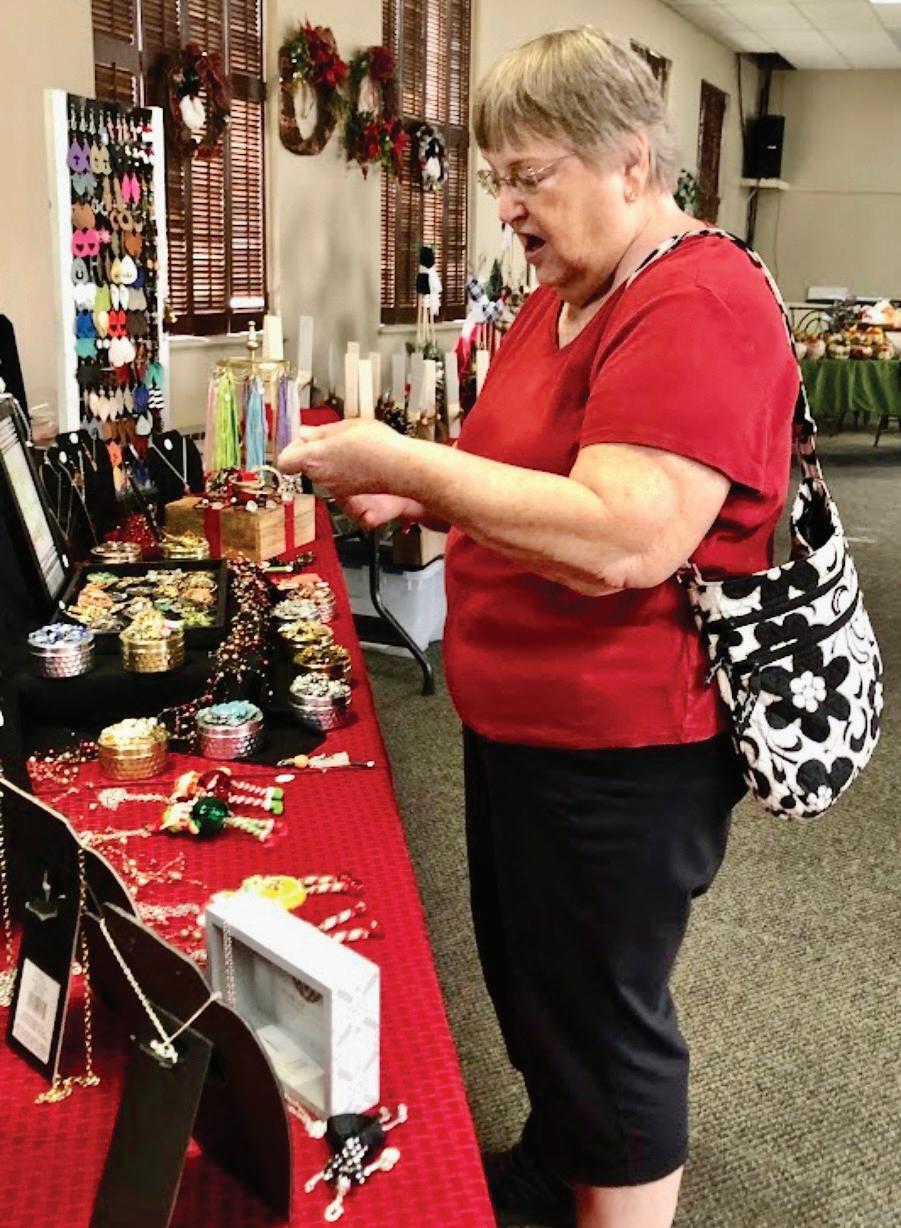
Nov. 9
Third Annual Holiday Bazaar
PHOTO COURTESY OF FIRST UNITED METHODIST CHURCH
The First United Methodist Church hosts an annual bazaar from 9 a.m. to 2 p.m., featuring seasonal crafts, gifts, decor and the famous Mrs. Harvey’s fruitcakes. New this year is Cook’s Corner, offering delicious homecooked frozen entrees and side dishes. This fundraiser benefits First United Methodist Church-Lake Wales. www.fumclw.org; 863-676-2516


A tradition of Highlands Hammock State Park, this Thanksgiving 5K Trunk Trot begins at 8 a.m. Entry fee is $27 and includes a shirt if you register by Nov. 15. www.friendsofhighlandshammockstatepark.org; 863-402-0061

Nov. 30
Florida Keys Community Concert Band
The Community Band Concert is 4-5 p.m. at the ICE Amphitheater in Founders Park and features a salute to our American Veterans. This family-friendly event kicks off the band’s 42nd season. The band performs music from movies to marches, with a visit from the Sunshine Corvette Car Club. Bring your lawn chairs and picnic lunch to this free event. keyscommunityconcertband.org; 503-970-2014

Want to share a family-friendly event with the readers of Florida Currents? Head online and enter the details at tinyurl.com/FloridaCurrents or use the QR Code for easy access. Make sure to submit the item at least 60 days before the event (due to press deadline). If you own rights to a print-quality photo promoting your event, include it with photo credit information.

While many gardeners take advantage of Florida’s temperate winters to grow vegetables, our cooler weather also provides lots of fun to be had with flowers.
Winter weather might drive us indoors, but that doesn’t mean we can’t take some flowers with us. Most flowering plants can be cut to enjoy inside, but some produce longer-lasting cut flowers than others.
Snapdragons are lovely in the garden. They make great borders, are beautiful when planted in groups and can thrive in containers.
They range in size from 6 inches to 3 feet tall and come in reds, yellows, oranges and maroon, so you can select a variety that fits your landscape.
The interesting flowers also look appealing in a vase. You can plant snapdragons once weather cools in the fall.
Delphinium
Delphinium is treated as an annual in Florida.
What makes this plant exceptional are its true-blue blooms, which are rare in the plant kingdom. If blue is not your hue, you can find delphinium in yellow, pink and white.
Delphinium also has delicate, lacy foliage that can add a soft texture to garden beds or container plantings. Starting in March, delphinium produces spikes of blossoms that are perfect for cutting and using in arrangements.
Dianthus, or sweet William, is a cut flower that provides cheerful color and a pleasant fragrance. Other dianthus species include pinks and carnations.
Most parts of the state should wait until October to plant it in flower beds. Dianthus will flower through winter and spring, only


stopping when temperatures rise, usually in May.
Pansies, violas and Johnny-jump-ups are charming cold-tolerant annuals you can plant in winter and enjoy through spring.
Pansy flowers can be 2 to 3 inches wide, while violas are smaller. They come in a range of colors, including red, white, purple, yellow and apricot. Some pansy flowers are a single bright color, while others have a dark “face.”
Not only can pansies add a splash of color to your table in a vase, these edible flowers can also be used to adorn your plate.
Calendula produces cheerful, daisy-like flowers. It can be planted in sun or partial shade, and forms a dense, rounded shape.
Calendula flowers are single or double and can be yellow or orange. They hold up well in floral arrangements. The flowers are edible and can be used as a garnish.
Once you’ve brought your flowers inside, remove any leaves or blossoms that will end up underwater. Cut one-half to 1 inch off the stems with a sharp, clean knife. Place the flowers in a clean vase filled with fresh water and, if you have it, flower food.
If the water eventually turns yellow and cloudy, wash the vase with soapy water and replace it with fresh water and flower food. Recut and rinse the stems before placing them back into the container.

Natasha Atlas graduated from the University of Florida’s Agricultural Education and Communication Program in 2021. She loves writing about unique and new varieties of flowers and plants for the Neighborhood Gardener Newsletter and its 10,000 subscribers. When she isn’t writing, she enjoys tending her own garden.
Do you have what it takes to be the energy e ciency MVP (most valuable player) in your home? When you take proactive steps to save energy at home, you can help your family save on monthly energy bills and help the environment—that’s a win-win!
Read the sentences below and unscramble the bolded letters to complete the energy e ciency tips. Check your work in the answer key.
1. Turn o glhsit when you leave a room.
2. Unplug smaller electronic devices like phone reahgcsr when you’re not using them.
3. Reduce your nesecr time to save energy and spend more time outdoors.
4. Turn o the reatw while brushing your teeth.
5. Keep doors and swdwnio closed when your home’s heating/cooling system is running.
6. When it’s hot, change to cooler tohgncil instead of adjusting the thermostat.

ByMirandaBoutelle
Q: How can smart-home technology help me lower my power bill?
A: Smart technology can make it easier to save energy by simplifying or automating tasks. It can also optimize energy use to reduce waste and improve efficiency.
When upgrading to smart technology at home, consider the purchase cost as well as long-term savings. For example, you may pay more for a product with the latest technology, but it could result in significant savings each year and throughout the lifetime of the appliance.
Here are some smart devices that take the work out of saving energy.
Smart thermostats save energy by automatically adjusting your heating or cooling system. For example, you can save as much as 10% a year on heating and cooling costs by adjusting your thermostat 7 to 10 degrees from its normal setting for eight hours a day, according to the U.S. Department of Energy.
You can program a smart thermostat to change the temperature when you are asleep or not at home or use a smartphone app to adjust your thermostat settings while you are away. Some models use artificial intelligence to maximize efficiency by learning your patterns and preferences. Prices range from $80 to $250, depending on features. Smart thermostats do not work with all heating and cooling systems, so check compatibility before you buy.
Your water heater can also be controlled for energy savings. Installing a timer on your electric water heater can save 5% to 12% of the energy it uses by turning it off at night and when you don’t need to use hot water, according to the DOE.
If you plan to replace your electric storage water heater with a heat pump
water heater, consider a model equipped with smart technology features, including Wi-Fi capabilities for controlling it remotely or during peak demand times, viewing the amount of hot water available and tracking energy use. A variety of modes are available, including vacation, efficiency and high demand, which produces more hot water. Some models can notify you or shut off if a leak is detected. Depending on the manufacturer and size of the unit, a smart heat pump water heater may only cost a few hundred dollars more than a standard heat pump water heater.
Smart lighting gives you the power to control lights in your home remotely or set a lighting schedule that fits your lifestyle. This can be beneficial for energy savings and provide home security benefits. If you or other members of your household are notorious for leaving lights on, smart lighting can help. Numerous features are available, including dimmable bulbs and color-changing effects.
Smart light switches are another budget-friendly way to control lighting. They’re priced from about $10 to $50. Smart switches with dimmable options are available and can also control ceiling fans. Some have occupancy sensors that turn lights off when no movement is detected in a room.
A smart plug fits into any outlet to control whatever is plugged into it. Set it to automatically turn off and on or control them using a smartphone app. Prices range from $8 to $25.
A variety of smart shades, curtains and blinds are available, including styles with integrated controls. You can also add smart controls to your existing blinds or curtains. Both options allow you to adjust the tilt of blinds and open or close curtains. Set a schedule, control them remotely or use a voice command paired with a voice

assistant, such as Alexa or Google Home. This allows you to reduce cooling needs in the summer and heating needs in the winter. Smart controls start at around $70. To save the most energy, prioritize windows with the most incoming light.
Upgrading to smart home technologies can make it easy to use less energy at home. Choose options that make the most sense for your lifestyle to optimize savings. n
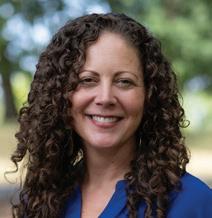
from the Midwest to the West Coast.
Today,
by


Cutting back on daily expenses can lead to significant savings and increased value
If you’re like most people, there are aspects of your life that become a daily routine. You get ready for work, get in your car and drive to the coffee shop on the way to the office. At lunchtime, you drive to the nearest fast-food location. Once you finally end the day at home, you stream an episode or two of your favorite show before bed.
As we all look for ways to save money in this age of increasing inflation, think about your daily routine and how much value it provides compared to the money you spend. A morning latte costs about $6, a fast-food combo with a burger, fries and a drink sets you back $10, and a Netflix subscription is about $16 each month.
the best value for your money?
The average daily cost of electricity is about $5.65, and the average monthly electric bill for Florida Keys Electric Cooperative members is $175. You can power your entire home every day for the price of a medium latte. You can brew your own coffee, cook your own meals, binge a series and run on a treadmill for less than the cost of that drink.
Electricity provides benefits that we often take for granted. It goes beyond short-term satisfaction by allowing us to charge devices and have cold food and hot water, all in a comfortable indoor climate. Beside the privilege it affords, electricity has also remained relatively cost-stable even amidst rising inflation.

All these daily expenses total around $85 a week, or about $340 monthly. And what is the real value—short-term satisfaction? Even if you start packing your own lunch, a daily latte will still cost about $120 a month. This can make you think—is this





As a member-owned cooperative, FKEC does everything in its power to ensure your costs stay reasonable and electricity remains a great value for our members. It’s not always easy, as there
there



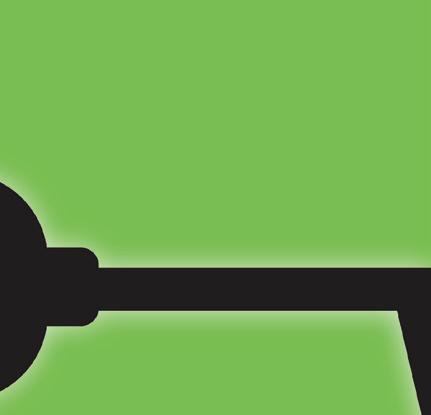




are several factors beyond inflation that impact the price of electricity—some within our control but most beyond it.
The cost of electricity can fluctuate due to supply and demand, infrastructure investment, maintenance and operational expenses.
Weather patterns also contribute, affecting demand and generation






capabilities, with extreme conditions leading to heightened energy use or disruptions. Government policies—such as subsidies for renewable energy or taxes and regulations on emissions—shape electricity costs as well. FKEC considers all these aspects when adjusting rates, and because we’re a cooperative, we consider the impact of those costs on our members as well.
As our community continues to rely on electricity for nearly everything in our homes, schools, hospitals and businesses, we need it to be reliable and affordable. You can be assured, your co-op always puts you top of mind and works each day to ensure electricity remains the best value for your money.




At Pioneer Utility Resources, the publisher of Florida Currents magazine, we are always working to put the right letters together to tell a story. The American Red Cross story can’t be told without three letters: A, B and O, which represent the main blood types. When those important letters are missing from blood bank shelves, lives are at stake.
With the recent hurricanes in Florida adding to the need for blood nationwide, we encourage each of you to consider
















Donate between Nov. 18 and Dec. 8, and you could receive two pairs of socks.
Every 2 seconds someone in the U.S. needs blood and or platelets.
Approximately 29,000 units of red blood cells are needed every day in the U.S.
Nearly 5,000 units of platelets and 6,500 units of plasma are needed daily in the U.S.
Sickle cell disease affects 90,000 to 100,000 people in the U.S. About 1,000 babies are born with the disease each year. Sickle cell patients can require blood transfusions throughout their lives.
According to the American Cancer Society, more than 1.9 million
donating blood by rolling up your sleeves and visiting a local Red Cross donation center between Oct. 25 and Dec. 25. Your gift of blood can save more than one life.
Visit this link—https://rcblood.org/3zJ1rxU—or scan the QR code below. Sign up to help us reach our goal and fill in the missing blood types so patients can receive the lifesaving care they need. Make and keep an appointment to give blood to the American Red Cross.

https://rcblood.org/3zJ1rxU
people are expected to be diagnosed with cancer in 2025. Many of them will need blood, sometimes daily, during their chemotherapy treatments.
Nearly 16 million blood components are transfused each year in the U.S.
The average red blood cell transfusion is approximately 3 units.
A single-car accident victim can require as many as 100 units of blood.
Blood and platelets cannot be manufactured; they can only come from volunteer donors.
The blood type most often requested by hospitals is type O.
One donation can help save more than one life.












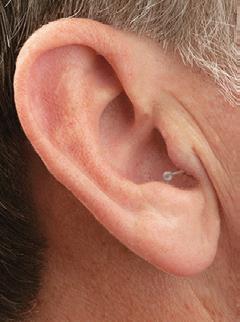





Thanks to your generosity, FKEC’s Charitable Trust has distributed nearly $4 Million from our members to our members in need.
For three decades, FKEC member’s small change has been making a big difference through the Florida Keys Electric Cooperative Members Charitable Trust, which allocates donations collected from FKEC’s Operation Round-Up® program.
Established in 1994, this community-focused initiative supports worthy causes in our service territory —the Upper and Middle Keys. The Trust was not envisioned to replace or supplement existing services or organizations, but was developed but to fill gaps for individuals or groups lacking other resources. Since the inception of the Trust and Operation Round-Up®, FKEC members have raised nearly $4 million, with $3.8 million distributed to date.
As we celebrate the Trust’s 30 years of giving, we sincerely thank our member-consumers who participate in Operation Round-Up®, as well as the Charitable Trust volunteer board directors, past and present.
With sincere gratitude, FKEC recognizes the nine directors currently serving on the Trust:
Richard Overfield, Chairman
Marlin Simon, Treasurer
Laura Brown, Secretary
Christina Boilini
Michelle Franck
Juneisy Guerra
Mary Russell
Nancy Wall
Shirley Wilson
The Trust Board and FKEC also extend heartfelt thanks to Co-op Executive Assistant Susan Kohlhofer for her crucial role in managing the Trust and ensuring its success.
The board, representing FKEC’s four districts, carefully reviews every funding request and meets monthly to allocate the Trust’s funds. The directors can face tough decisions with requests that sometimes exceed resources by 400%. For example, they doubled funds in 2020 to help with the financial strain of the pandemic and adjusted distributions after hurricanes.
“As stewards of our members’
donations, we take the responsibility of distributing these contributions very seriously. Every request is vetted with both our hearts and our heads,” says Richard Overfield, who has served on the Trust for 21 years.
What is Operation Round-Up®?
Operation Round-Up® is a voluntary giving program where FKEC members can round up their electric bills to the next dollar, with the extra change going directly to the Charitable
Hi Round-Up,
Trust. The average contribution is 50 cents per month, and it will never exceed 99 cents on a single bill. For example, if a monthly bill is $135.49, we will round it up to $136.00. The extra 51 cents goes directly to the Charitable Trust.
Each month, your statement shows an amount listed for Operation Round-Up®, and includes the extra few cents to total an even dollar amount. n



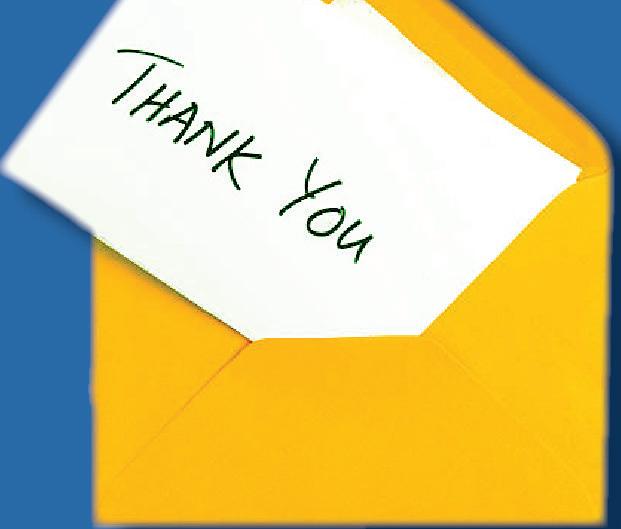
I would like to thank you for everything you have done for us. If it wasn’t for you we wouldn’t have a place to sleep, eat, and me and my family would be on the streets. I know God is going to multiply what you have done for us.
Dear Charitable Trust,

The financial assistance [for rent] from FKEC is helping me stay gainfully employed at the local hospital, a job which I very much appreciate and enjoy. From the bottom of my heart, thank you all so much for this tremendous help and all that this program does for the community. Thank you!
Operation Round-Up® is a voluntary program. FKEC members are automatically enrolled. You can opt out of the program by contacting FKEC at 305-852-2431.
Note: The Member Charitable Trust can only distribute funds collected through Operation RoundUp®. It cannot accept other donations.